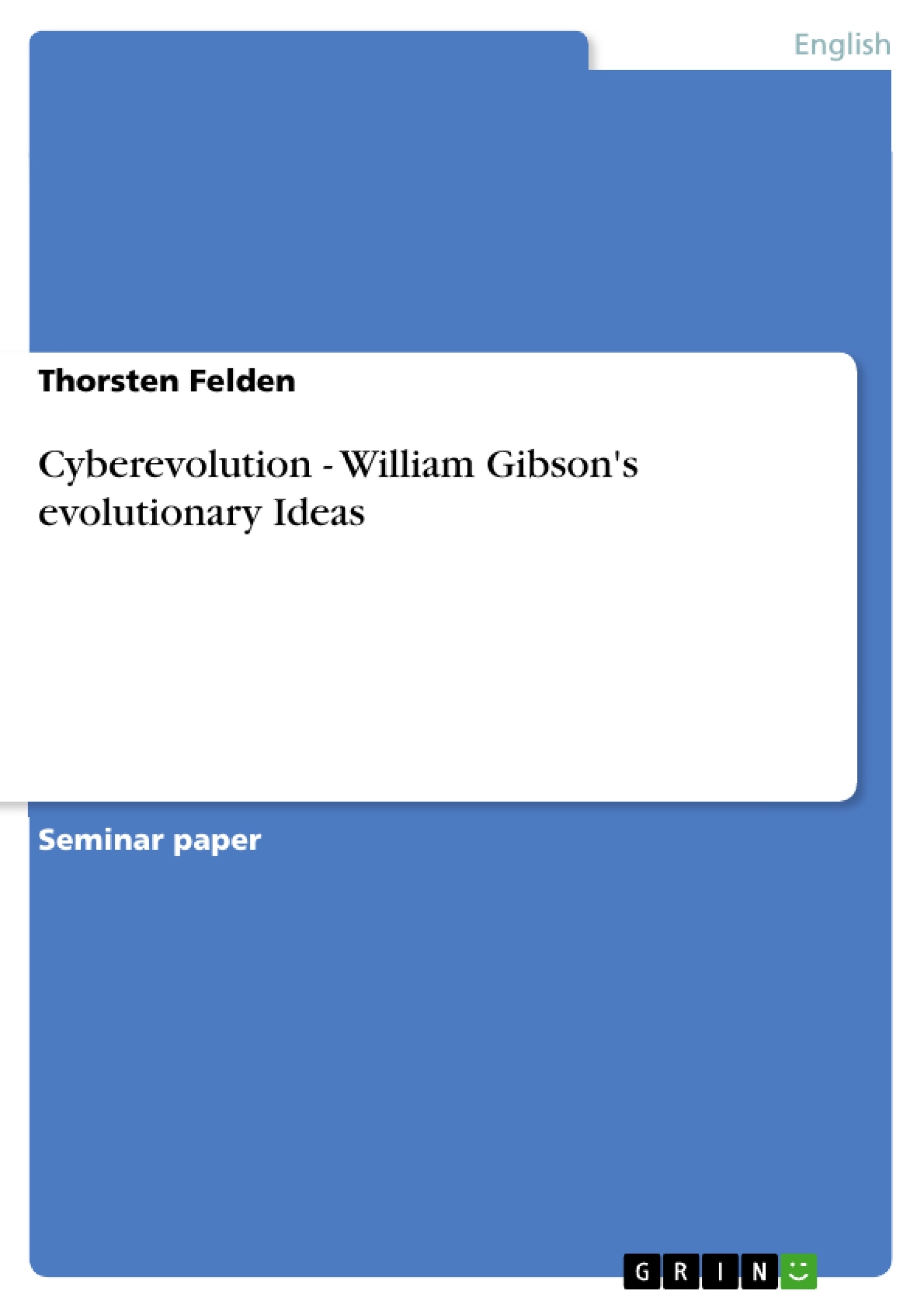Classic evolutionary theory always looks backwards. Darwin, his predecessors and successors put forward their theories by comparing present organic records with those of the past. Indeed some ideas of social evolution are imbued with a certain kind of perspective into the future, believing in an ongoing progression of human societies. Still, in order to prove the accuracy of those ideas, one had to rely on evidence taken from history or from cultures which were believed to be primitive and thus representing former states of societies. Science fiction’s view goes quite in the opposite direction: Here, the present marks the point of view from where we look into the future of society, the future of mankind. The following paper examines the notions of evolution we can find in William Gibson's work. I will try to deal with the question how we can perceive an evolution of the human race in his novels and what other ideas of evolution Gibson incorporates into his work.
Starting off with the query whether there is to find any sort of biological evolution in Gibson's work, the second chapter will deal with the picture of nature Gibson draws. How does he describe nature (meaning organic beings or biological environments), or to put it more correctly, how is nature conceived through the eyes of his protagonists? Then I will take a closer look at the dualistic relationship of nature and technology. What importance has technology for the societies Gibson sketches, and what effect has technology on their inventors? The main topic of this chapter will be the investigation of nature's and technology's evolutionary features in Gibson's work: How does the human species develop and which way does human made technology take? Finally, the chapter will deal with capitalism as a very own kind of evolutionary concept.
Chapter three will take a look at the concept of evolution in Gibson's work from a different angle, treating evolution not as concrete biological-technological development but more as some sort of abstract principle. The focus will shift here from the dualism of biology-technology to the dialectics of chaos and order. Does Gibson see evolution more as a force driven by chaos or as a force that creates structure, patterns and order from mere chaos?
Inhaltsverzeichnis (Table of Contents)
- Introduction
- Evolutionary Fiction
- Nature and Technology
- The Evolution of the Human Species
- The Evolution of Human Culture
- Chaos and Order
- Conclusion
Zielsetzung und Themenschwerpunkte (Objectives and Key Themes)
This paper examines the notions of evolution in William Gibson's work, particularly in the context of his novels. It investigates how the concept of evolution is manifested in Gibson's fictional world, focusing on the interplay of nature and technology, the development of the human race, and the role of capitalism as an evolutionary force.
- Evolution of the human species in Gibson's novels
- The relationship between nature and technology in Gibson's work
- The role of capitalism as an evolutionary concept
- The dialectics of chaos and order in relation to evolution
- The impact of technology on human society and individuals
Zusammenfassung der Kapitel (Chapter Summaries)
The introduction delves into the concept of evolutionary fiction, contrasting the traditional backward-looking approach of classical evolutionary theory with the forward-looking perspective of science fiction. It highlights how William Gibson's work provides a unique lens through which to examine the evolution of humanity and its relationship with technology.
The second chapter explores the relationship between nature and technology in Gibson's novels. It examines how Gibson portrays nature, often as a hybrid of organic and cultural elements, and the estrangement of his characters from the natural world. The chapter also investigates the interplay between technology and the development of the human species, analyzing how technology impacts human evolution and the nature of society.
Schlüsselwörter (Keywords)
The key themes explored in this paper include evolutionary fiction, nature and technology, human evolution, cyberculture, capitalism, chaos and order, and William Gibson's novels.
- Citation du texte
- Thorsten Felden (Auteur), 2005, Cyberevolution - William Gibson's evolutionary Ideas, Munich, GRIN Verlag, https://www.grin.com/document/62359



